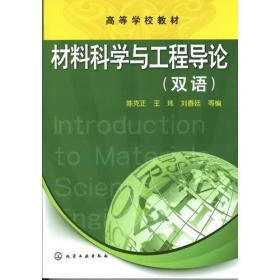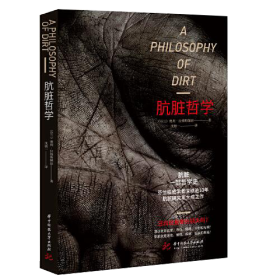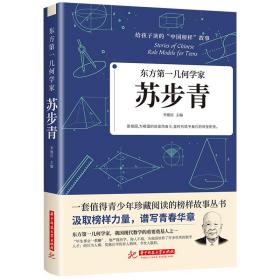
材料科学与工程导论(陈克正)(双语)
¥ 12.5 4.3折 ¥ 29 九品
仅1件
北京昌平
认证卖家担保交易快速发货售后保障
作者陈克正 编
出版社化学工业出版社
出版时间2011-08
版次1
装帧平装
货号A5
上书时间2024-12-20
- 在售商品 暂无
- 平均发货时间 15小时
- 好评率 暂无
- 最新上架
商品详情
- 品相描述:九品
图书标准信息
- 作者 陈克正 编
- 出版社 化学工业出版社
- 出版时间 2011-08
- 版次 1
- ISBN 9787122117588
- 定价 29.00元
- 装帧 平装
- 开本 16开
- 纸张 胶版纸
- 页数 220页
- 字数 360千字
- 【内容简介】
-
本教材是材料科学与工程导论的双语教材,以现行“材料科学与工程导论”课程标准为依据,结合中文教材,以国外原版教材做参考并根据国内的教学情况及材料科学研究的最新进展对教材内容进行适度的整合。全书共分9章,具体内容包括:绪论,固体材料的结构,常用工程材料(高分子材料、金属材料、陶瓷材料和复合材料)的结构、力学性能、成分、加工工艺以及应用前景,常用工程材料的化学性能(耐腐蚀性能)和物理性能(电、磁、热和光学性能)以及新型材料(生物材料、纳米材料和智能材料)的介绍等内容。
本教材可供大专院校材料科学与工程及相关专业师生使用,也可供从事材料科学与工程研究、开发及管理的人员参考。 - 【目录】
-
Chapter 1 Introduction
Learning Objectives
1.1 Historical Perspective
1.2 What is Materials Science and Engineering?
1.3 Why Study Materials Science and Engineering?
1.4 Classification of Materials
1.5 Advanced Materials
1.6 Modern Materials’ Needs
References
Chapter 2 The Structure of Crystalline Solids
Learning Objectives
2.1 Atomic Structure and Interatomic Bonding
2.1.1 Fundamental Concepts
2.1.2 Bonding Forces and Energies
2.1.3 Atomic Bonding in Solids
2.2 Crystal Structures
2.2.1 Fundamental Concepts
2.2.2 Metallic Crystal Structures and Crystal Systems
2.2.3 Crystallographic Points,Directions,and Planes
2.2.4 Crystalline and Noncrystalline Materials
2.3 Imperfections in Solids
2.3.1 Point Defects in Metals
2.3.2 Dislocations—Linear Defects
2.3.3 Interfacial Defects
2.3.4 Bulk or Volume Defects
References
Chapter 3 Polymer Materials
Learning Objectives
3.1 Polymer Structures
3.1.1 Introduction
3.1.2 Fundamental Concepts
3.1.3 Polymer Molecules
3.1.4 Designation of Polymers
3.1.5 Commonly Used Polymers
3.1.6 The Chemistry of Polymer Molecules
3.2 Crystallization,Melting and Glass Transition Phenomena in Polymers
3.3 Mechanical Properties of Polymers
3.3.1 Stress-Strain Behavior
3.3.2 Macroscopic Deformation
3.3.3 Viscoelastic Deformation
3.4 Polymer Types
3.4.1 Plastics
3.4.2 Elastomers
3.4.3 Fibers
3.4.4 Miscellaneous Applications Coatings
3.5 Processing of Polymers
3.5.1 Polymerization
3.5.2 Polymer Additives
3.5.3 Forming Techniques for Plastics
3.5.4 Fabrication of Elastomers
3.5.5 Fabrication of Fibers and Films
References
Chapter 4 Metallic Materials
Learning Objectives
4.1 Mechanical Properties of Metals
4.1.1 Introduction
4.1.2 Tensile Test
4.1.3 Hardness Testing
4.2 Dislocations and Strengthening
4.2.1 The Role of Dislocations
4.2.2 Work Hardening
4.2.3 Grain Size Strengthening
4.2.4 Alloy Hardening
4.3 Failure
4.3.1 Introduction
4.3.2 Fundamentals of Fracture
4.3.3 Ductile Fracture
4.3.4 Brittle Fracture
4.3.5 Fracture Mechanics in Design
4.3.6 Fracture Toughness
4.3.7 Fatigue
4.3.8 Creep
4.4 Phase Diagrams and Phase Transformations in Metals
4.4.1 Introduction
4.4.2 Phase Diagrams
4.4.3 Phase Transformations
4.5 Applications and Processing of Metal Alloys
4.5.1 Introduction
4.5.2 Types of Metal Alloys
4.5.3 Fabrication of Metals
4.5.4 Thermal Processing of Metals
References
Chapter 5 Ceramic Materials
Learning Objectives
5.1 Structures and Properties of Ceramics
5.1.1 Introduction
5.1.2 Ceramic Structures
5.1.3 Mechanical Properties of Ceramics
5.2 Application and Processing of Ceramics
5.2.1 Types and Applications of Ceramics
5.2.2 Fabrication and Processing of Ceramics
References
Chapter 6 Composite Materials
Learning Objectives
6.1 Introduction
6.2 Particle-Reinforced Composites
6.2.1 Large-Particle Composites
6.2.2 Dispersion-Strengthened Composites
6.3 Fiber-Reinforced Composites
6.3.1 The Fiber Phase
6.3.2 The Matrix Phase
6.4 Polymer-Matrix Composites
6.4.1 Glass Fiber-Reinforced Polymer(GFRP)Composites
6.4.2 Carbon Fiber-Reinforced Polymer(CFRP)Composites
6.4.3 Aramid Fiber-Reinforced Polymer Composites
6.5 Metal-Matrix Composites
6.6 Ceramic-Matrix Composites
References
Chapter 7 Corrosion and Degradation of Materials
Learning Objectives
7.1 Introduction
7.2 Corrosion of Metals
7.2.1 Electrochemical Considerations
7.2.2 Corrosion Rates
7.2.3 Passivity
7.2.4 Environmental Effects
7.2.5 Forms of Corrosion
7.2.6 Corrosion Environments
7.2.7 Corrosion Prevention
7.3 Corrosion of Ceramic Materials
7.4 Degradation of Polymers
7.4.1 Swelling and Dissolution
7.4.2 Bond Rupture
7.4.3 Weathering
References
Chapter 8 Electrical/Thermal/Magnetic/Optical Properties of Materials
Learning Objectives
8.1 Introduction
8.2 Electrical Properties of Materials
8.2.1 Metals and Alloys
8.2.2 Semiconductors
8.2.3 Ionic Ceramics and Polymers
8.3 Thermal Properties of Materials
8.3.1 Heat Capacity
8.3.2 Thermal Expansion
8.3.3 Thermal Conductivity
8.3.4 Thermal Stresses
8.4 Magnetic Properties of Materials
8.4.1 Diamagnetism,Paramagnetism and Ferromagnetism
8.4.2 Antiferromagnetism and Ferrimagnetism
8.4.3 The Influence of Temperature on Magnetic Behavior
8.4.4 Domains,Hysteresis and Magnetic Anisotropy
8.4.5 Superconductivity
8.5 Optical Properties of Materials
8.5.1 Interaction of Light with Matter
8.5.2 Atomic and Electronic Interactions
8.5.3 Refraction,Reflection,Absorption and Transmission
8.5.4 Opacity and Translucency in Insulators
8.5.5 Applications of Optical Phenomena
References
Chapter 9 Biomaterials/Nanomaterials/Smart Materials
Learning Objectives
9.1 Biomaterials
9.1.1 Definition of Biomaterials
9.1.2 Performance of Biomaterials
9.1.3 Brief Historical Background
9.2 Nanotechnology and Nanomaterials
9.2.1 Introduction
9.2.2 Examples of Current Achievements and Paradigm Shifts
9.3 Smart Materials
9.3.1 Introduction
9.3.2 Shape Memory Alloys
9.3.3 Applications of Smart Materials
Reference
点击展开
点击收起
— 没有更多了 —












以下为对购买帮助不大的评价